Nikusui is a signature soup dish from Osaka, Japan. The broth, made with beef and bonito flakes (katsuobushi), is sure to whet your appetite. While it is delicious on its own, adding tofu makes it even more satisfying.
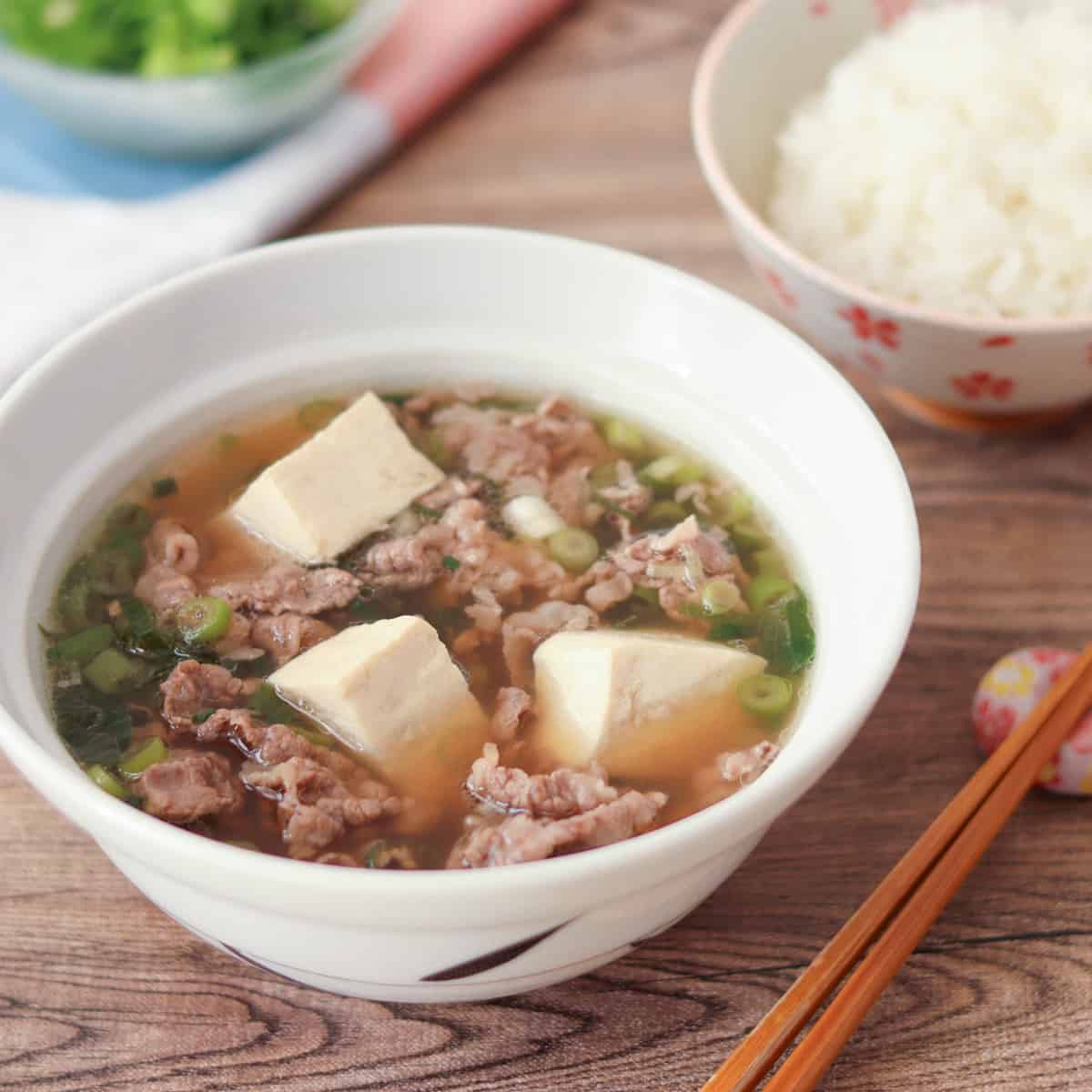
Jump to:
What is Nikusui?
Nikusui is a soup made by simmering beef in bonito dashi, flavored with seasonings such as mirin and soy sauce. "Niku" means meat, and "sui" is short for "suimono," which refers to a clear soup. The meat used in this soup is thinly sliced beef.
This flavorful dish originated at the udon restaurant "Chitose" in Osaka. It gained popularity and has since become one of Osaka's signature dishes. With its rich beef flavor and light broth, it pairs well with rice. Today, it can even be found at restaurants outside of Osaka.
The origin of nikusui
There is a short story behind the creation of nikusui.
It all started when a regular customer at the udon restaurant "Chitose" was feeling under the weather from a hangover and had no appetite. He asked for niku udon (beef udon noodle soup) without the udon noodles.
The owner honored this unusual request, and as a result, Chitose became known as "the udon restaurant that doesn’t serve udon," gaining popularity for its unique offering.
Eventually, the restaurant began serving a version with tofu, which is gentler on the stomach, instead of udon noodles. Since then, "nikusui" and "nikusui with tofu" have become the signature dishes of Chitose and have spread throughout Osaka.
Both versions are delicious, but "nikusui with tofu" is especially recommended, as it is healthy yet hearty. Give this recipe a try and see for yourself.
Key ingredients
The ingredients for this soup are quite simple: thinly sliced beef, green onions (scallions), and tofu. While beef and green onions are essential, tofu is optional.
If you substitute tofu with udon noodles, you can make niku udon (beef udon noodle soup). This is the original dish that inspired nikusui, and it is also delicious—I highly recommend trying it as well.
How to drain tofu
If you choose to add tofu to nikusui, there is a small but important tip to keep in mind: remove the excess moisture from the tofu before adding it.
Tofu contains a lot of moisture, so draining it helps prevent the soup from becoming watery and allows the flavors to be absorbed. In Japan, the following methods are commonly used to drain tofu:
- Place a weight on the tofu and let it sit for at least 30 minutes.
- Microwave the tofu on medium power (500-600W) for 2 minutes.
- Boil the tofu for a few minutes.
Each of these methods has its advantages and disadvantages. Placing a weight on the tofu drains it effectively, but it takes time. The microwave method is quick, but it doesn't remove as much moisture as the other methods. The boiling method is fast and effective but requires more effort.
I used the microwave method for this recipe, but feel free to use whichever method you prefer. Additionally, when using a weight or the microwave method, it is more effective to wrap the tofu in paper towels beforehand.
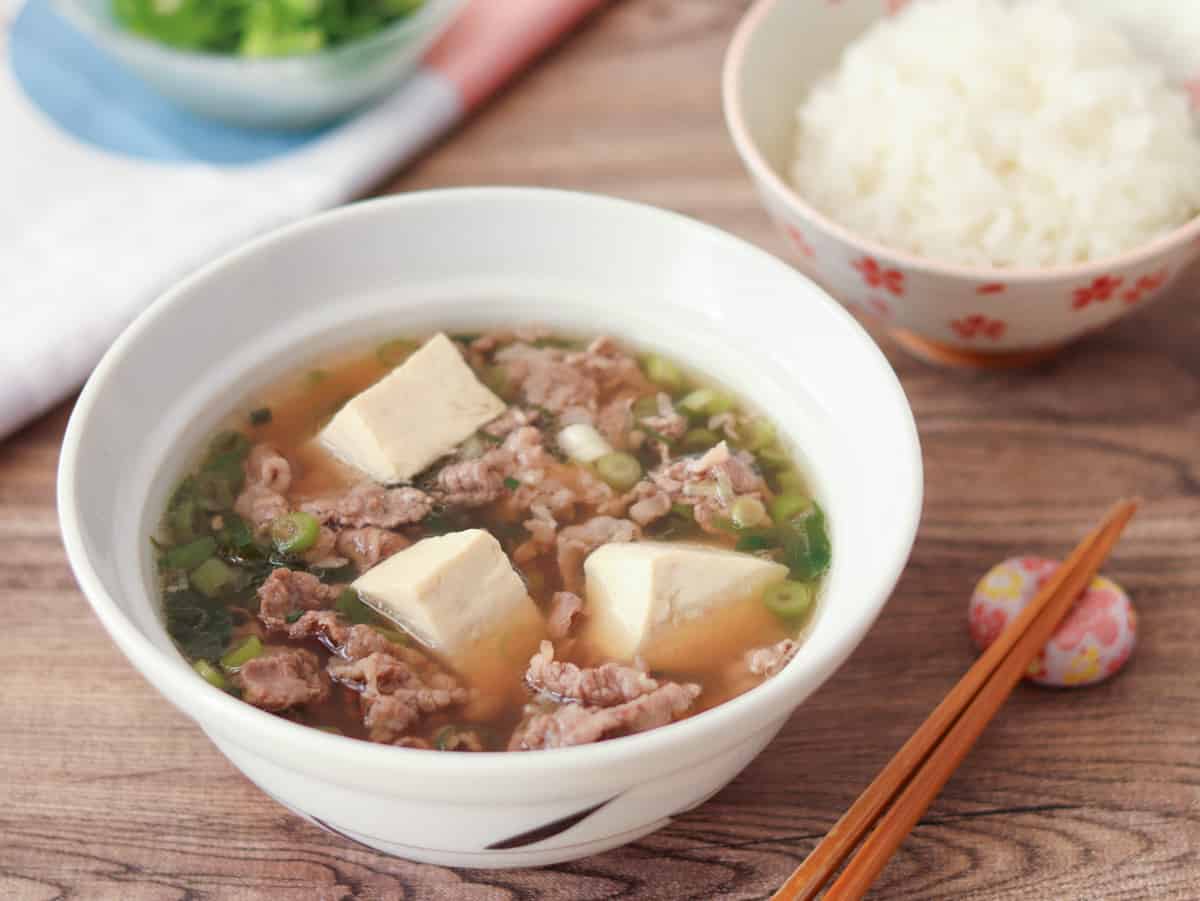
📋Step-by-step recipe
Ingredients
- 5.3 oz thinly sliced beef
- 1.8 oz green onions / scallions
- 5.3 oz silken tofu
Bonito dashi for nikusui:
- 2 ⅔ cups water
- 1 ⅙ cups bonito flakes (katsuobushi)
Seasonings:
- 1 Tbsp mirin
- ½ tsp sugar
- 1 ½ Tbsp light soy sauce (You can substitute it with regular soy sauce; the main difference is the color.)
Instructions
🕒 Total: 20 minsIf you already have bonito dashi (udon broth), start from step 3. In that case, use 2 ¼ cups (540 ml) for 2 servings.
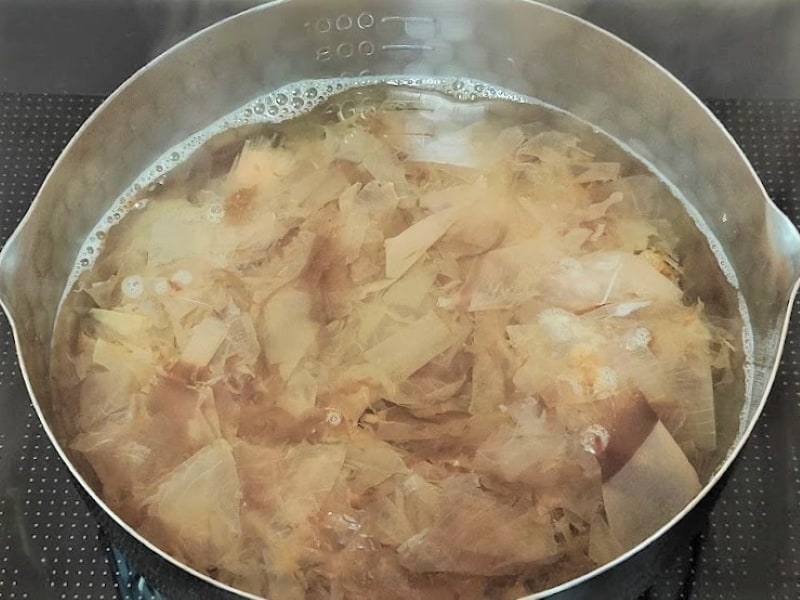
Step 1
Fill a pot with water and bring it to a boil. Once boiling, reduce the heat to low, add bonito flakes, and let it simmer for 6 minutes.
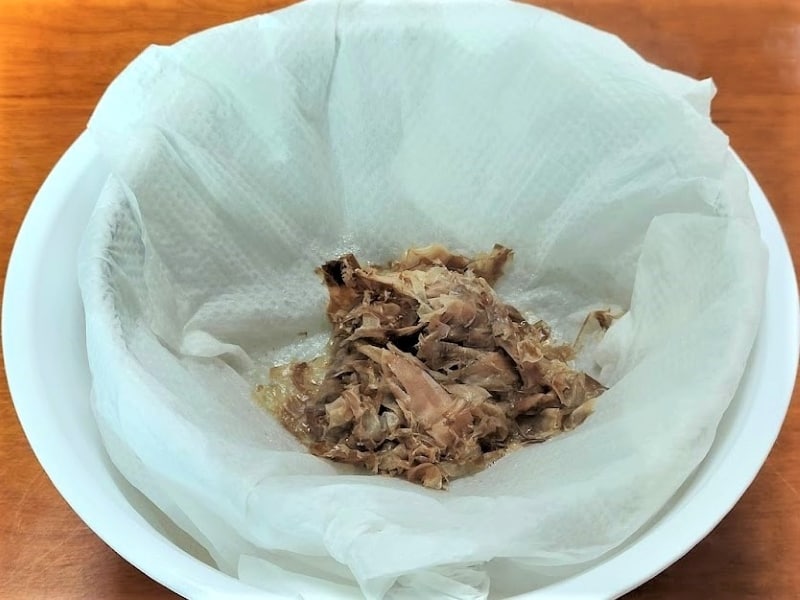
Step 2
Turn off the heat and strain the mixture through a sieve lined with paper towels or a cloth (such as cheesecloth). Alternatively, if you don't mind a few fine bonito flakes remaining, you can simply use a fine-mesh strainer. Bonito dashi is now ready.
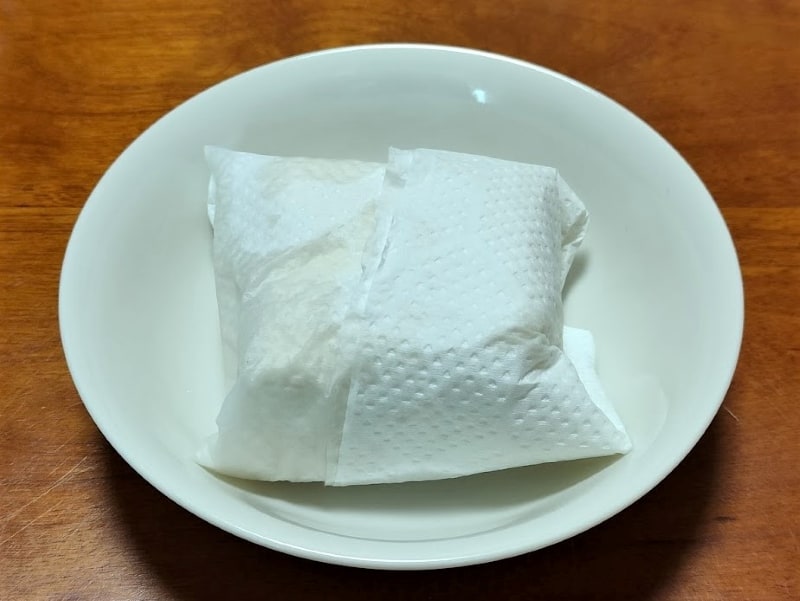
Step 3
Wrap the tofu in paper towels, place it on a microwave-safe plate without covering it, and microwave it on medium power (500-600W) for 2 minutes. Then, remove the tofu and let it cool.
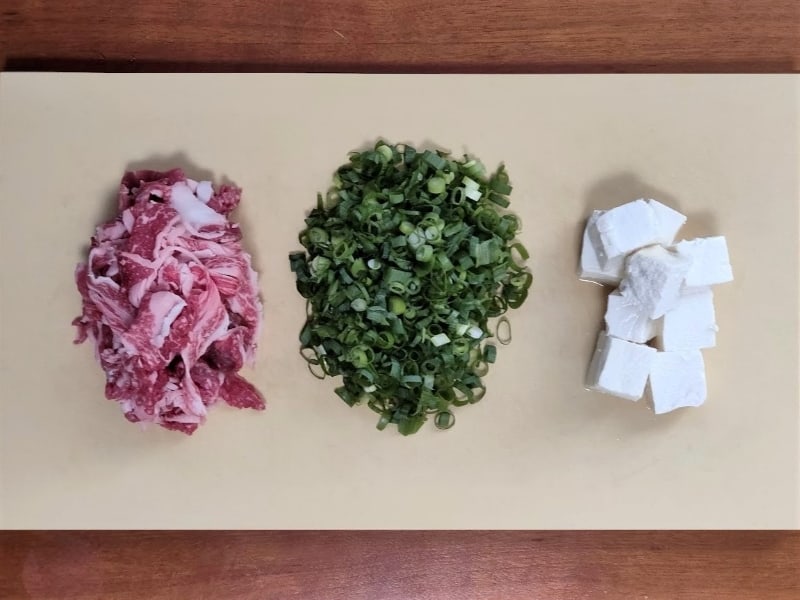
Step 4
Cut the beef into about 2-inch (5 cm) pieces. Thinly slice the green onions. Cut the tofu into bite-sized pieces, each about ⅗ inch (1.5 cm) thick.
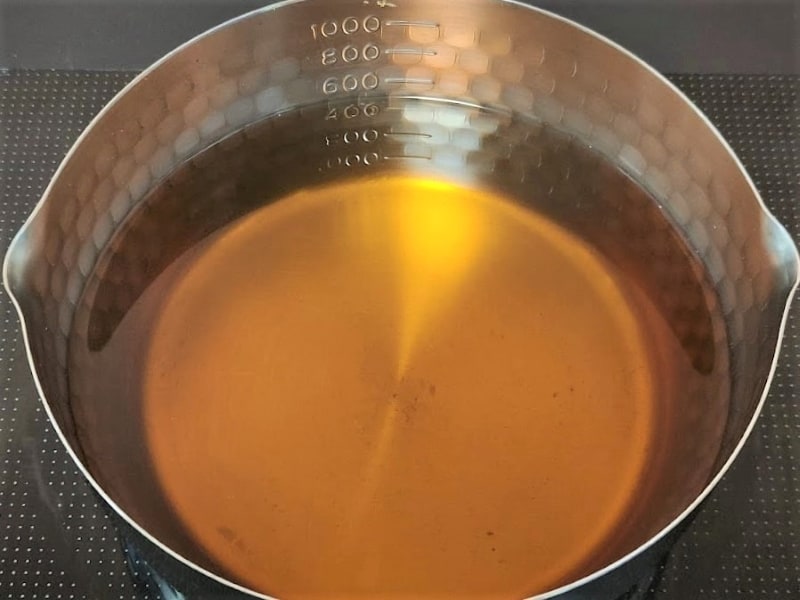
Step 5
Return the dashi to the pot, add the seasonings (mirin, sugar, and light soy sauce), and bring it to a boil.
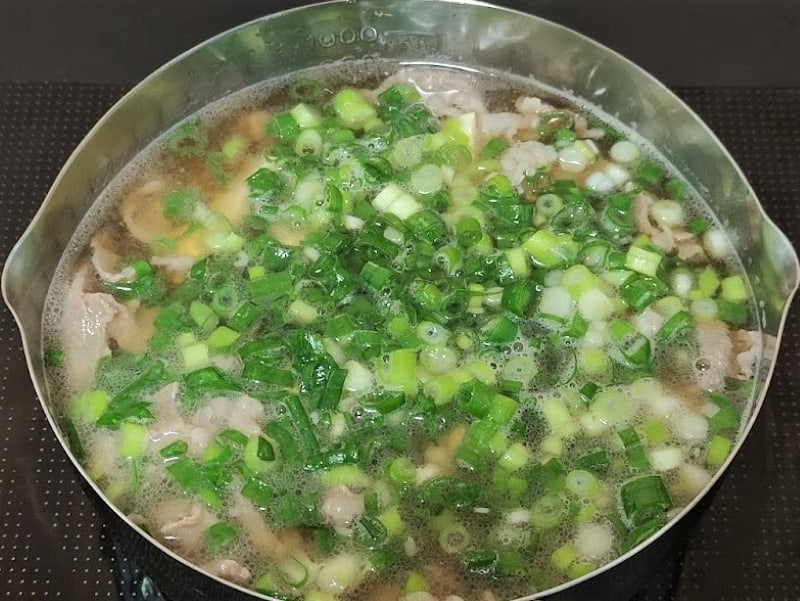
Step 6
Put the beef in the pot and simmer over low heat, skimming off any scum. Once the beef changes color, add the tofu and green onions, and continue simmering until they are cooked through.
To store
You can store it in the refrigerator for up to 2 days.
Cooking tips
It is recommended to prepare bonito dashi for this soup by using extra bonito flakes and simmering them longer than you normally would for other Japanese dishes. The richer dashi will enhance the flavor of the soup.
To learn more about How to Make Bonito Dashi, please refer to the linked page.
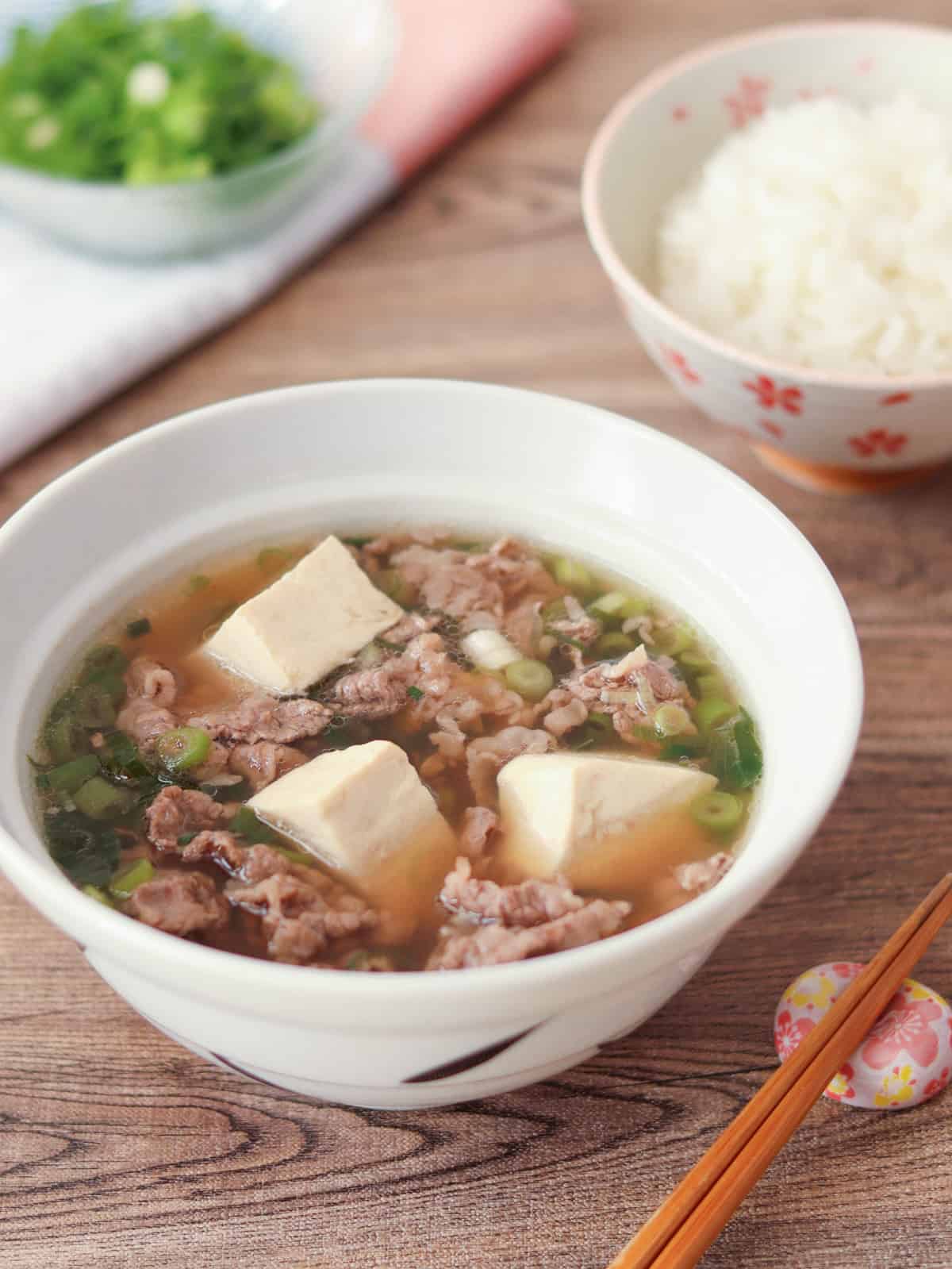
If you try this recipe, I’d love to hear what you think. Please consider leaving a review and star rating in the comments below. If you enjoyed it, I’d really appreciate it if you shared it with your friends.
More recipes you'll love
Recipe card

Nikusui (Japanese Beef Soup from Osaka)
Ingredients
- 5.3 oz thinly sliced beef
- 1.8 oz green onions / scallions
- 5.3 oz silken tofu
Bonito dashi for nikusui:
- 2 ⅔ cups water
- 1 ⅙ cups bonito flakes (katsuobushi)
Seasonings:
- 1 Tbsp mirin
- ½ tsp sugar
- 1 ½ Tbsp light soy sauce (You can substitute it with regular soy sauce; the main difference is the color.)
Instructions
- Fill a pot with water and bring it to a boil. Once boiling, reduce the heat to low, add bonito flakes, and let it simmer for 6 minutes.
- Turn off the heat and strain the mixture through a sieve lined with paper towels or a cloth (such as cheesecloth). Alternatively, if you don't mind a few fine bonito flakes remaining, you can simply use a fine-mesh strainer. Bonito dashi is now ready.
- Wrap the tofu in paper towels, place it on a microwave-safe plate without covering it, and microwave it on medium power (500-600W) for 2 minutes. Then, remove the tofu and let it cool.
- Cut the beef into about 2-inch (5 cm) pieces. Thinly slice the green onions. Cut the tofu into bite-sized pieces, each about ⅗ inch (1.5 cm) thick.
- Return the dashi to the pot, add the seasonings (mirin, sugar, and light soy sauce), and bring it to a boil.
- Put the beef in the pot and simmer over low heat, skimming off any scum. Once the beef changes color, add the tofu and green onions, and continue simmering until they are cooked through.
Notes
- If you already have bonito dashi (udon broth), start from step 3. In that case, use 2 ¼ cups (540 ml) for 2 servings.
- You can store it in the refrigerator for up to 2 days.


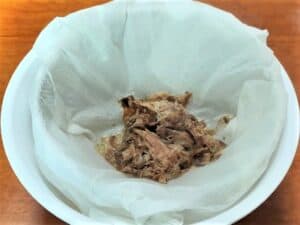
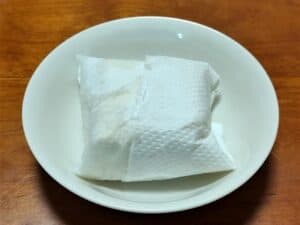

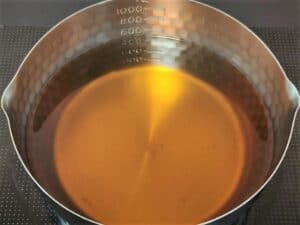
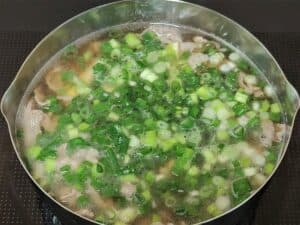




Leave a Rating and a Comment